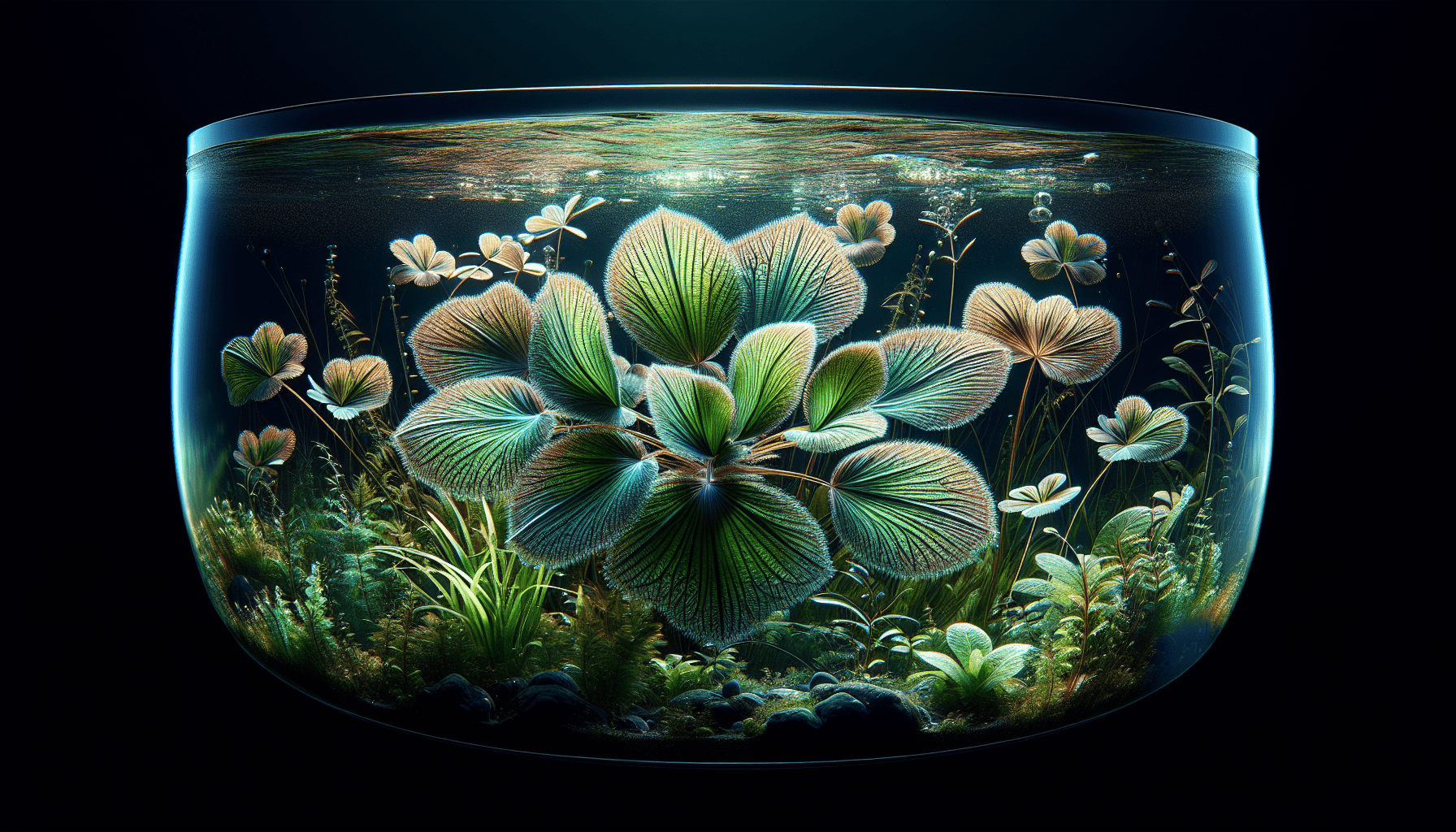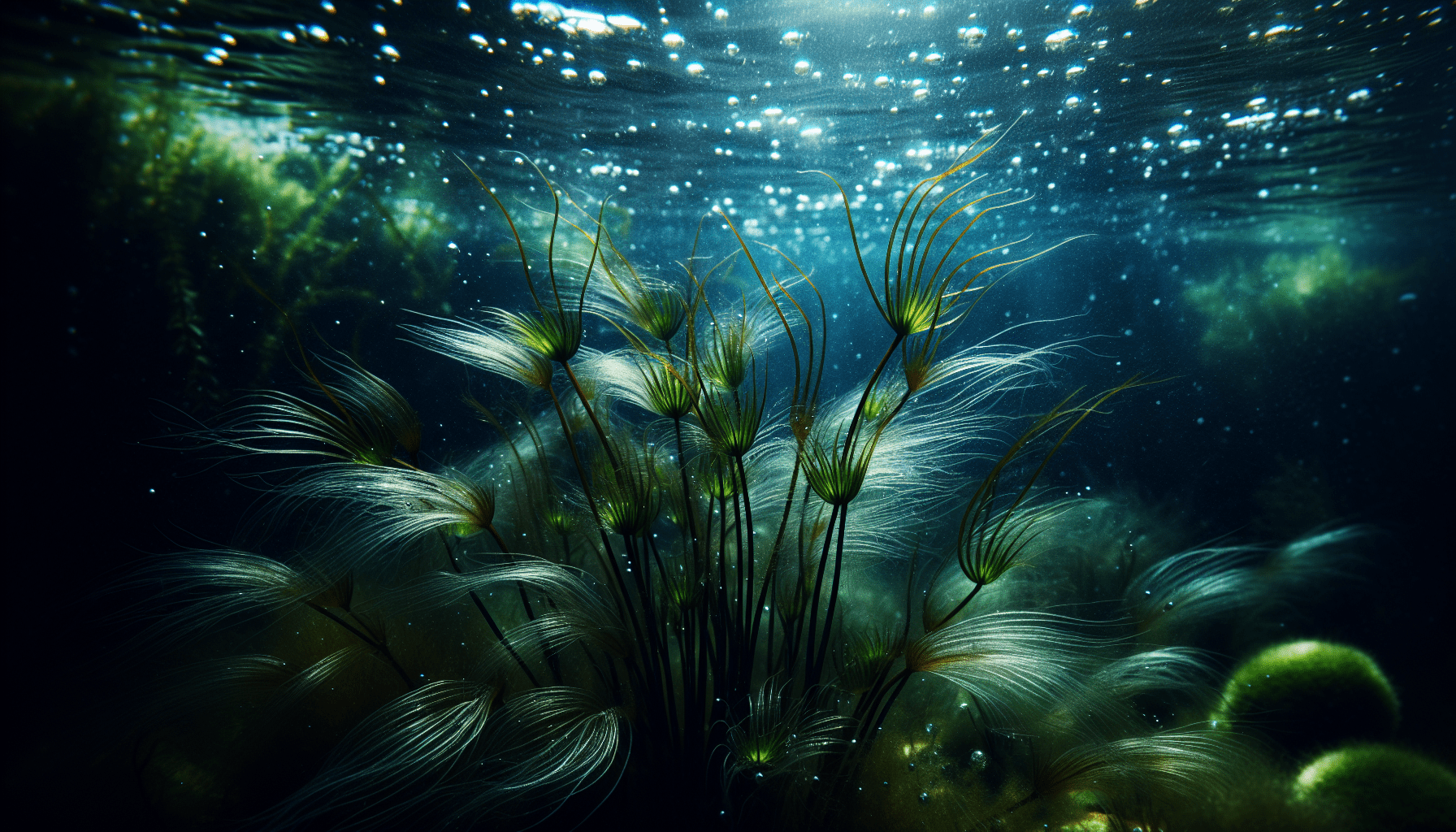In this rigorous exploration of aquatic flora, you will acquire knowledge about the intriguing water plant, Elodea Nuttallii. Often classified as a weed due to its invasive nature, Elodea Nuttallii, with its submerged, twisting tendrils and fine, threadlike leaves, posits a host of ecological challenges and benefits in the aquatic environment. Comprehending its biology, ecological impacts, and role in various ecosystems paves the way towards a nuanced understanding of aquatic biodiversity. Whether botanical novice or seasoned expert, your understanding of water-borne ecosystems will be augmented through this meticulous focus on the widespread aquatic ‘weed’ that is Elodea Nuttallii.

Basic Description of Elodea Nuttallii
Elodea Nuttallii, also known as Nuttall’s waterweed, is a perennial aquatic plant native to North America. Although it is often considered a weed, it plays an instrumental part in its ecosystem, providing food and habitat for various aquatic species.
Taxonomical Classification
Belonging to the kingdom Plantae, and the phylum Tracheophyta, Elodea Nuttallii further classified under the order Alismatales and family Hydrocharitaceae.
Physical Characteristics
The physical composition of Elodea Nuttallii is quite recognizable. It possesses dark green, bushy leaves that form dense clusters along the stem, which give it a characteristic bottle-brush appearance. The plant can grow up to one meter long.
Habitat and Distribution
Elodea Nuttallii is typically found in slow-moving or still water bodies like streams, ponds, and lakes. Its distribution is wide-ranging, covering North America, Europe, Asia, Australia, and New Zealand.
Taxonomy of Elodea Nuttallii
Order and Family
Elodea Nuttallii belongs to the order Alismatales, which is characterized by herbaceous aquatic and semi-aquatic plants. Its family Hydrocharitaceae comprises close to 20 genera of aquatic plants.
Species and Genus
Under the genus Elodea, Elodea Nuttallii is one species among several others identified. This species was named after Thomas Nuttall, a British botanist and zoologist.
Common Names
Common names for Elodea Nuttallii include waterweed, Nuttall’s waterweed, and western waterweed.
Physical Characteristics of Elodea Nuttallii
Leaves and Stems
The plant’s dark green, lanceolate leaves are approximately 4-12 mm long and about 1-2mm wide. They are finely toothed and grow in whorls of three around the stem. The stems are slender and branch freely, contributing to the plant’s bushy appearance.
Flowers and Seeds
Elodea Nuttallii produces small, white unisexual flowers that float on the water surface. These flowers give way to a fruit, which is an oblong capsule containing numerous microscopic seeds.
Growth Pattern
This aquatic plant exhibits a rapid growth pattern, particularly in nutrient-rich waters. Prolific growth may lead to the formation of dense mats, which can cover a large surface area within a short period.

Habitat of Elodea Nuttallii
Preferred Water Conditions
Elodea Nuttallii thrives in slow-flowing or still waters. It prefers alkaline water with a neutral to basic pH.
Geographic Distribution
Indigenous to North America, the Elodea Nuttallii plant has spread to Europe, Asia, Australia, and New Zealand due primarily to human activities.
Adaptations to Environment
The plant can survive in waters with varied temperatures, demonstrating great adaptability. Its rootless, free-floating form allows it to drift and colonize new areas rapidly.
Reproduction and Growth of Elodea Nuttallii
Modes of Reproduction
It reproduces both sexually via seeds and asexually through fragments, which can root to form new plants. The latter means of reproduction often leads to rapid spread in suitable conditions.
Growth Rate
Under optimal conditions, Elodea Nuttallii can grow at an astonishingly fast pace, able to double its biomass within a week.
Life Cycle
The life cycle stages of Elodea Nuttallii include the seed, seedling, mature plant, and flowering stages. Since the plant is perennial, it lives for more than two years and so goes through these stages multiple times.
Elodea Nuttallii as an Aquatic Weed
Why it’s Considered a Weed
Elodea Nuttallii is often considered a weed due to its rapid growth rate and capability to form dense mats, which can block waterways and impede water-based activities such as boating and fishing.
Effects on Native Ecosystem
Dense mats of Elodea Nuttallii may disrupt the native ecosystem by blocking sunlight, altering nutrient cycling, and displacing native plant species.
Control Measures
Control measures for this species largely depend on the local conditions and include mechanical removal, application of herbicides, or introduction of biological control agents.
Impacts of Elodea Nuttallii on Ecosystem
Effects on Water Quality
The plant can have both positive and negative effects on water quality. On the one hand, it can improve water clarity by absorbing nutrients and outcompeting algae. On the other hand, extensive growth may lead to oxygen depletion in the water.
Impacts on Biodiversity
The introduction of Elodea Nuttallii in foreign environments may negatively impact local biodiversity by outcompeting native aquatic plant species.
Interaction with Other Species
Elodea Nuttallii provides shelter and food for various aquatic animals, thus playing an important role in the ecosystem, despite the challenges it may pose.
Control Measures for Elodea Nuttallii
Mechanical Control
Mechanical control involves manual removal of the plant, which can be labor-intensive and only provide short-term relief.
Chemical Control
Chemical control through herbicides can be effective but must be done carefully to prevent damage to non-target species and potential water pollution.
Biological Control
Biological control introduces species that feed on Elodea Nuttallii to keep their population at bay. However, this requires thorough research to ensure the introduced species won’t cause further ecological imbalance.
Uses of Elodea Nuttallii
Use in Aquatic Gardening
Elodea Nuttallii, with its attractive appearance, is often used in aquariums and ponds for decorative purposes besides oxygenating the water.
Use in Scientific Research
The plant holds significant value in scientific research, especially in studying photosynthesis and cellular structures.
Potential Medicinal Applications
While not yet widely recognized, some research suggests possibilities of medicinal applications due to its antioxidative, antibacterial properties, warranting further investigations in this area.
Summary and Future Directions for Research
Current State of Knowledge
Currently, Elodea Nuttallii is well-documented for its rapid growth rate, reproductive methods, and its impact on ecosystems. Yet, its full potential and implications are not entirely understood, and possibilities for medicinal application remain largely unexplored.
Questions for Further Research
Questions remain on the plant’s exact effects on water quality, specific interactions with other species, and detail mechanisms of its potential medicinal properties.
Potential Impact of Climate Change on Distribution and Impact
As the plant thrives in warmer waters, climate change is certainly expected to expand its geographical range, potentially exacerbating its invasive nature. Therefore, it becomes imperative to study the likely impacts to device efficient management strategies.